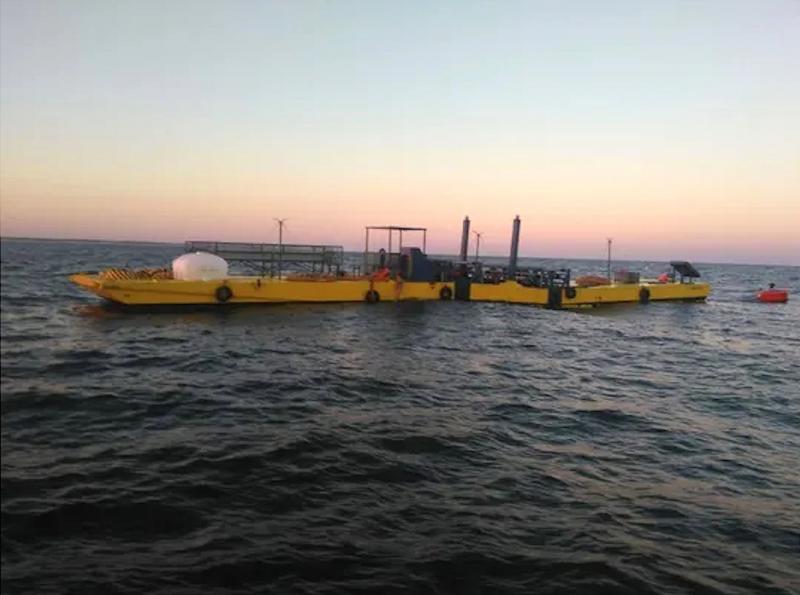Wave-powered desalination project proposed off Indian River Inlet
Maryland-based Murtech has proposed a project that would use wave power to convert salt water to potable water. The project calls for a pipeline to run from a 138-foot-long barge in order to bring the potable water to shore.
This would be the second 5-year permit sought for the project. The first was issued in January 2014.
The U.S. Army Corps of Engineers has issued a public notice asking for public comment regarding the placement of an articulating barge in the ocean, about three-quarters of a mile due east of Indian River Life Saving Station.
According to the notice, during significant storm events, the barge would be disconnected from the onshore pipeline and relocated to outside the Indian River Marina.
The notice says concentrated saline water will be discharged by the barge during the desalination process, creating an area with high salt content in the water, but according to the notice, this will area will be limited and the overall effect will be minimal.
The pipeline running from the barge to the shore will be approximately six feet below the ocean floor.
Robert Murtha, Murtech president and founder, said the first time this barge deployed, the company was studying the design of the barge’s structure. He said there’s no way to replicate a sea environment that doesn’t involve full-scale sea trials.
Murtha said the technology is called an articulating wave energy conversion system. He said this is an alternative energy that harnesses wave energy to move saltwater through desalinization filters, creating fresh water. The fresh water is then passed through a network of pipes to water treatment facilities on land. He said the goal is to create a system that could be deployed in the days after a power-destroying storm, and still be able to provide potable water to the storm-ravaged area.
Murtha said this time around, the company will be trying to create actual desalinated water. He said if the permit is approved again, the goal over the next five years is to have it out in the ocean for short sea trials, make adjustments and then conduct longer trials, replicating real life-events.
The notice was issued Feb. 13 and comments should be submitted in writing within 15 days. Lawrence M. Slavitter, U.S. Army Corps of Engineers biologist, said comments will be accepted until end of business, Thursday, Feb. 28.
A full copy of the U.S. Army Corps of Engineers’ public notice can be found on the webpage of the Philadelphia District’s marine design center. Written comments should be sent to District Engineer, US Army Corps of Engineers, Philadelphia District, Wanamaker Building, 100 Penn Square East, Philadelphia, Pa., 19107.
For more information on the project, Slavitter can be reached at 215-656-6734 or lawrence.m.slavitter@usace.army.mil.
















































